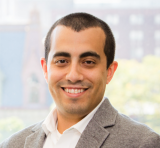A Cell Morphology Landscape of Pediatric Cancer Cell Lines

Science has made impressive leaps in the ability to precisely measure what is unique about each childhood cancer patient, which has improved our ability to treat childhood cancers. However, there remain many patients for which treatments do not work and many more who suffer from life-long toxic side-effects. We therefore need to develop better and less toxic treatments for childhood cancer patients. One strategy that is growing in importance is the concept of high-throughput drug screening. In these experiments, scientists can test cellular responses to many thousands of potential therapeutic agents. However, these responses are most commonly very simple, consisting of only counting how many cells are present before and after drug treatment. This will tell us about the drug’s cell killing effect, but will miss more important impacts drugs can have on cells like promoting a healthier phenotype without killing. This category of drug screening research is called “phenotypic drug screening”, which uses powerful microscopes and computers to learn details about cancer cells that humans cannot detect by eye. We are learning that the rich information gained from these microscope images are similar to gene information, but they also provide unique information that may help identify new treatment avenues. With fast, modern computers and smart enough algorithms we are only just now able to pursue these experiments. We will direct all of this power to curing different types of childhood cancers with microscopy, computers, and phenotypic drug screening.
We will perform drug screening in eight different types of childhood cancers using drugs that have already been approved for many different diseases by the U.S. Food and Drug Administration, which means these drugs have low toxicity. This type of experiment is known as drug repurposing, which is a promising strategy proven effective in other diseases. Importantly, we will be approaching these drug screens differently than what’s been done before. In the past, drug screens have only looked at how effective compounds are at killing cancer cells. Here, we will measure much more detail and learn specifically which drugs make cells look healthier. We will use automated microscopes to take tens of thousands of pictures of thousands of cells per hour and apply advanced computational procedures, like the algorithms in chatGPT, to learn which compounds might be good candidates for followup experiments and clinical trials. We will make all of the data publicly available in an easy to use web application, so that researchers and anyone else can view the microscopy images to see for themselves how these treatments are working. By viewing cells under a microscope, we can also learn subtle differences in the structures within them to ask new questions about how these cancers work to grow, evade treatment, and cause so much suffering in these children and their families. We will build a pediatric cancer drug screening platform, which we will apply to many different cancers in the future, to discover new treatment avenues at a large scale.

